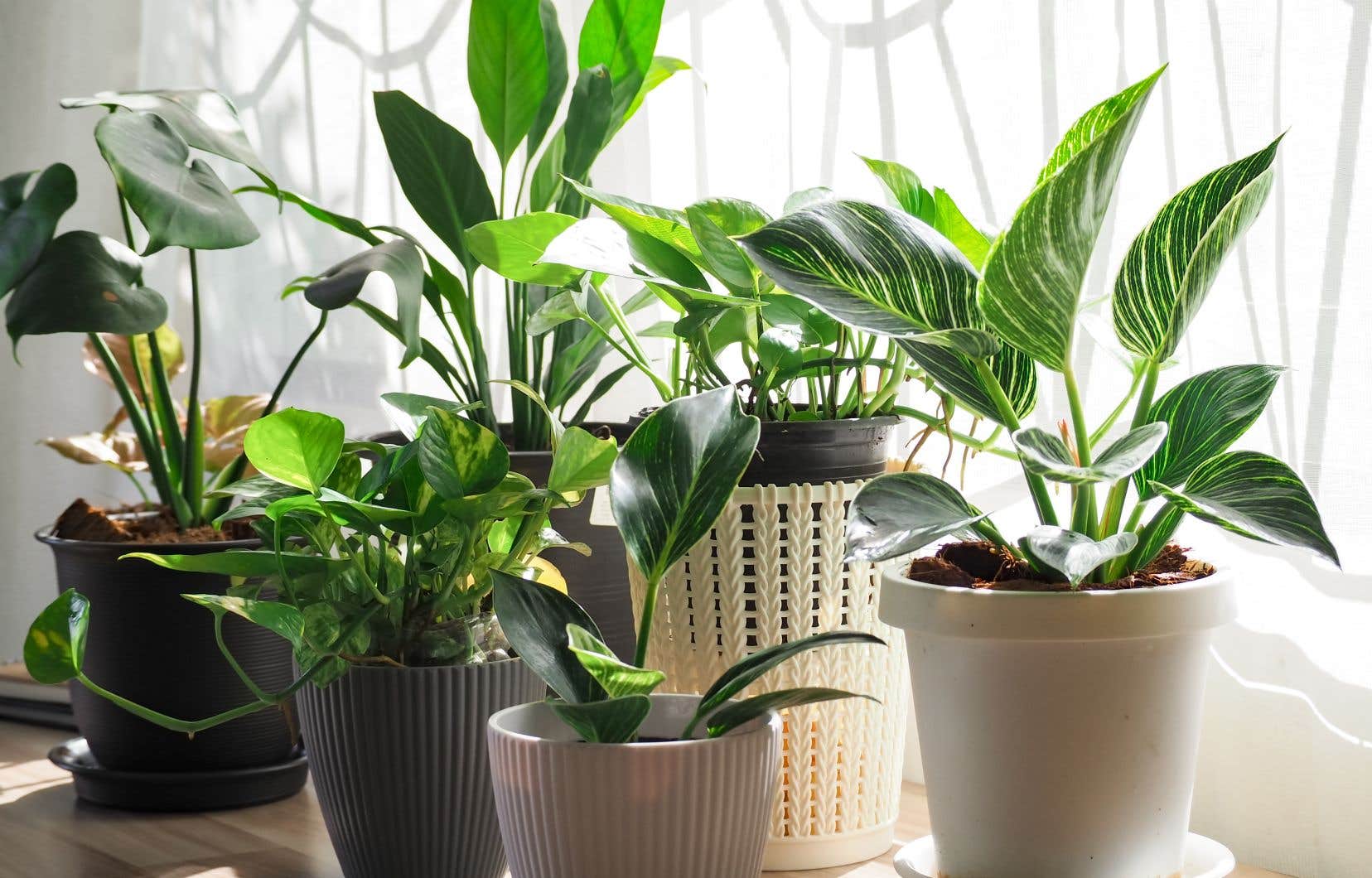This text is part of the special Pleasures notebook
Green plants bring freshness and life to our interior. However, for them to flourish fully, it is essential to offer them the best possible care. These 10 simple and effective tips will help you excel with your houseplants.
1. Rotate your plants every time you water
Give your plants loving attention by giving them a quarter turn each time you water, always in the same direction. This little tip will allow them to receive light from all sides and grow harmoniously: uniform foliage guaranteed!
2. Shower your plants!
Give your precious plants an invigorating shower 3 or 4 times a year to gently remove dust, grease and other dirt that may accumulate on their leaves. These impurities can impair their ability to breathe and absorb light, which is vital to their health. Use lukewarm water and be sure to clean them afterwards with a cloth, taking care of each leaf. If you suspect the presence of unwanted items, it is always possible to clean them with your cloth and soapy water; add a few drops of dish soap to a container of water and gently wash your leaves.
3. Equip yourself with a humidifying tray
Give your plants a bath in humidity by placing them on a tray of stones or clay balls. Pour water into the tray so that the stones are soaked, without covering them completely. This little trick is very useful for correcting low atmospheric humidity during the fall and winter seasons. The water will gently evaporate from the tray, creating a beneficial humid microclimate for your plants while the stones prevent your plants from coming into direct contact with the water. Be careful, however, succulent plants do not need this type of tray: they tolerate drier conditions well!
4. Surround yourself with bright shades
Create a welcoming and bright space for your plants by choosing white or pale shades for the room that houses them. Also opt for furniture and rugs in soft colors. Pale colors have the wonderful ability to reflect light, providing plants with more beneficial rays. On the contrary, dark colors absorb light and can leave plants in a poor state.
5. Wash your windows
Give your plants all the light they need! Our interiors may be darker than we imagine, which can affect their health. A simple but effective tip is to make sure you always keep your windows clean, especially during the fall and winter when the intensity of sunlight and its duration are lower. This will allow your plants to fully benefit from the precious rays of the sun and to flourish.
6. Read your journal
Take a few minutes to sit in the location where you are placing the houseplants and read a newspaper for 10 minutes. If you find reading pleasant and easy, the location has fairly good lighting, usually ideal for most plants. This simple test will allow you to determine if it is a suitable place for your green companions.
7. Prune Stemmed Plants
Don’t hesitate to take your pruning shears and gently prune your multi-stemmed plants to control their growth and encourage their flourishing! By pruning carefully, you encourage more harmonious and balanced growth, allowing your precious plants to remain compact and full of life. The ideal time is late winter and early spring, or just after flowering for flowering plants.
8. Leach the potting soil
Give your houseplants a revitalizing bath every few months to remove mineral salts that can build up in the soil from watering and fertilizers used. Present in too large quantities in your soil, these salts can be toxic to your plants and harm their proper growth. All you have to do is carefully carry your plant to the sink, without its saucer, then let a stream of lukewarm water run over the soil for 4 or 5 minutes. Excess water will flow gently and take away unwanted substances with it.
9. Fertilize at the right time
Limit fertilizer application to times of year when your plants are actively growing, generally from early March to September. Outside of the active growth period, fertilizer not only becomes useless, but it could even harm your plants. It’s best to avoid overloading them with unnecessary nutrients when their metabolism naturally slows down (and save time!). Some exceptions may apply. In fact, using grow lights can still allow your plants to continue growing outside of these periods, so it may be useful to continue fertilizing them at this time.
10. Use pots with drainage holes
These small holes are essential because they allow excess water to drain away, preventing it from accumulating and causing fatal root rot for your plants. For more style, you can use decorative pots as planters, inside which you will place your plants in draining pots.
This content was produced by the Special Publications team at Duty, relating to marketing. The writing of the Duty did not take part.
